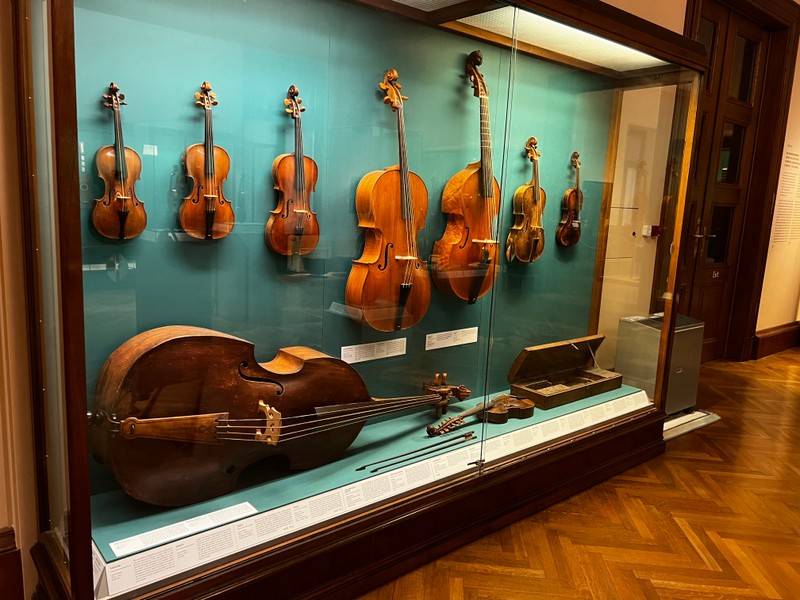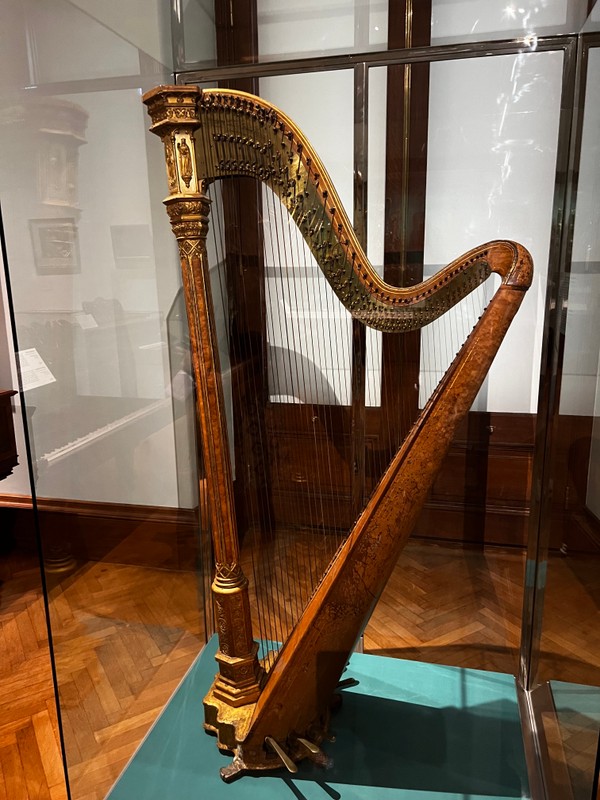Musical Instrument Museum in Kunsthistorisches Museum
Introduction
Text-to-speech Audio
An absolutely wonderful collection of Baroque and Renaissance style instruments. Very easily walkable space with items to explore in every direction that you look. Audio guides can be provided with not only information on each item in the collection but also many sound samples of the various instruments. A prefect place to spend those hot afternoon summer hours in Vienna.
Images
The old school String Family

The slightly newer String Family

A table for a quartet with included candle holders!

A Giraffe Piano always catches the eye of "people" around it

This is the "skinny" version of the Tuba

Look at the detail on this harp!

Backstory and Context
Text-to-speech Audio
The twelve room Collection of Historic Musical Instruments has a long history involving the combination of two primary collections. The first collection comes from Archduke Ferdinand II who setup his collection at Ambras Castle in 1580. This late Renaissance collection is considered one of the largest of the time and consisted of more than just the musical instruments. Everything from coins to armor were included in the inventory. At the death of the Archduke in 1596, the collection was documented in a detailed inventory allowing us to trace the items path to Vienna. The dangerous conditions in Innsbruck during the Napoleonic Wars led to the collection being brought to Vienna in 1806.
The second major collection to join the Archduke collection dates back to the late Italian Renaissance into the baroque period. The collection was owned by the Obizzi family and curated under Pio Enea II who was born in 1592. Pio Enea was particularly interested in the arts and secured the collection not only for it’s uniqueness but also for practical use in the preforming arts. Unfortunately, due to some family events, the collection was transferred to Vienna in 1870. Although the collection was in Vienna, it wasn’t until 1914 that the collection became part of the Imperial Collections allowing the items to join the Archduke collection bringing the total collection to over 400 instruments.
The has continued to grow from smaller collections being added since 1914. The items have also undergone renovations due to climatic conditions, facility environments, and moving locations. Finally in 1993 the collection was setup in it’s current 12 room layout and has continued to further expand to include 400 additional items. In 2001, an audio guide in multiple languages was added to not only direct the flow of the collection but also to offer the additional sound sample enhancements.
